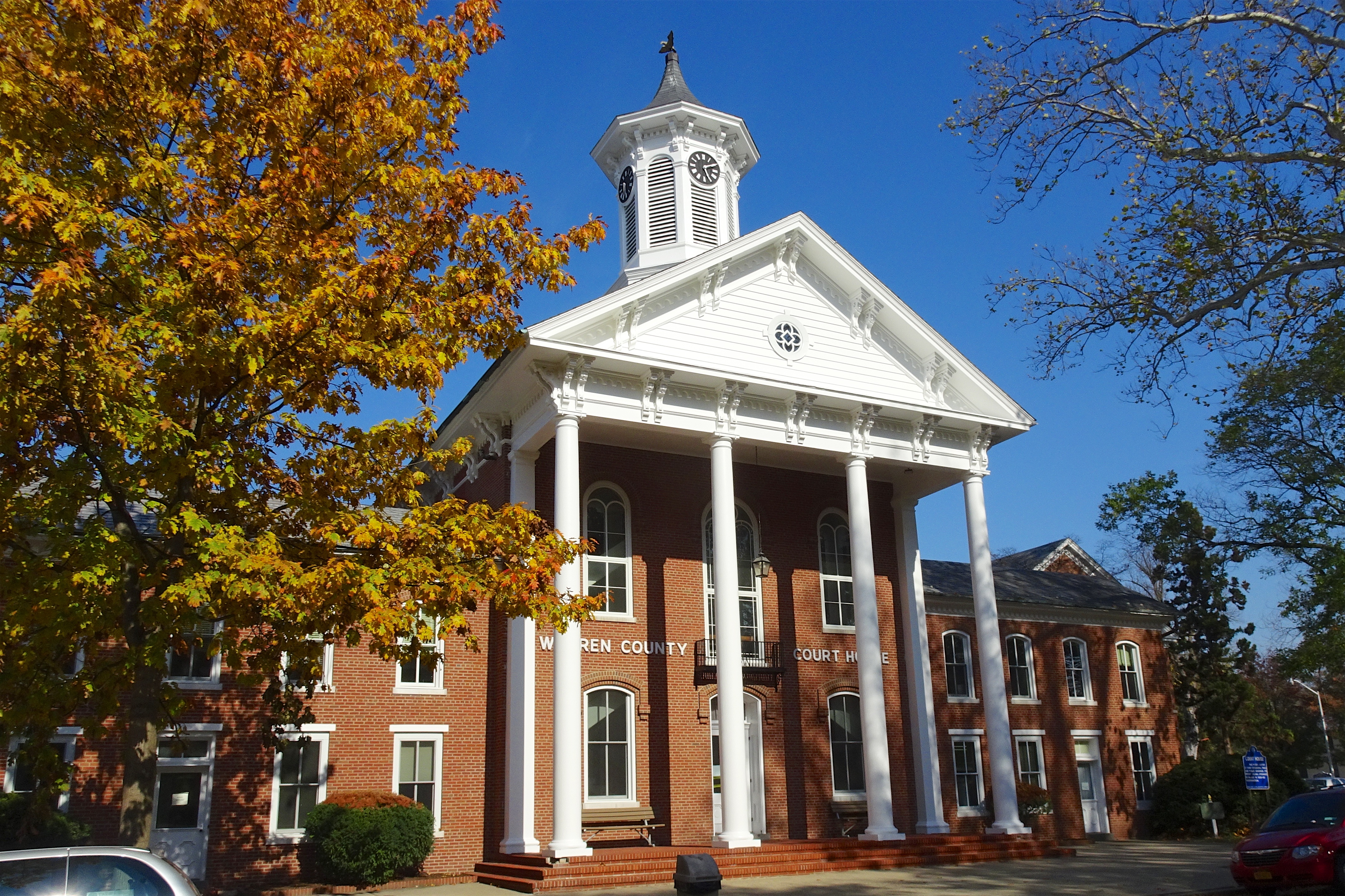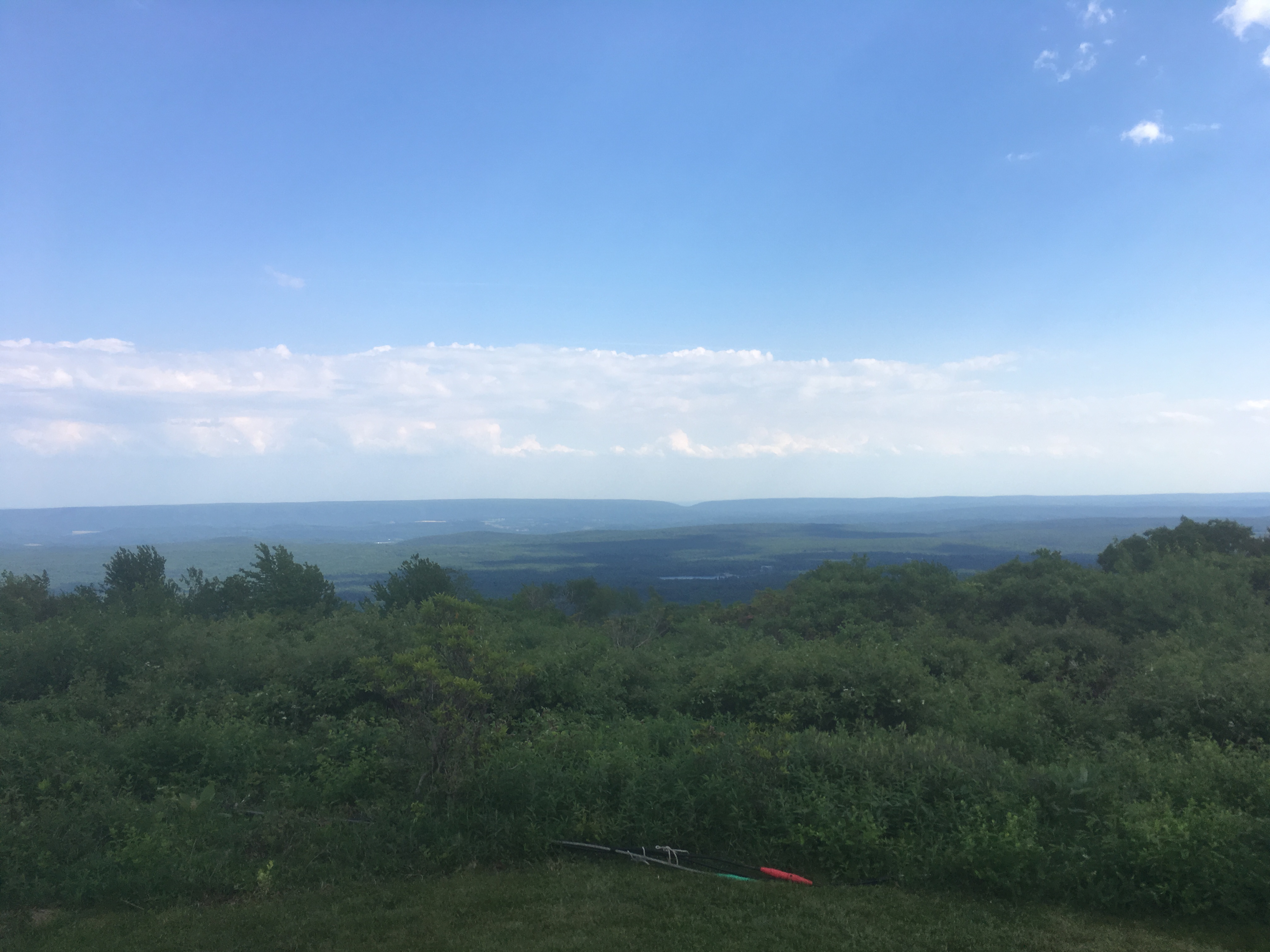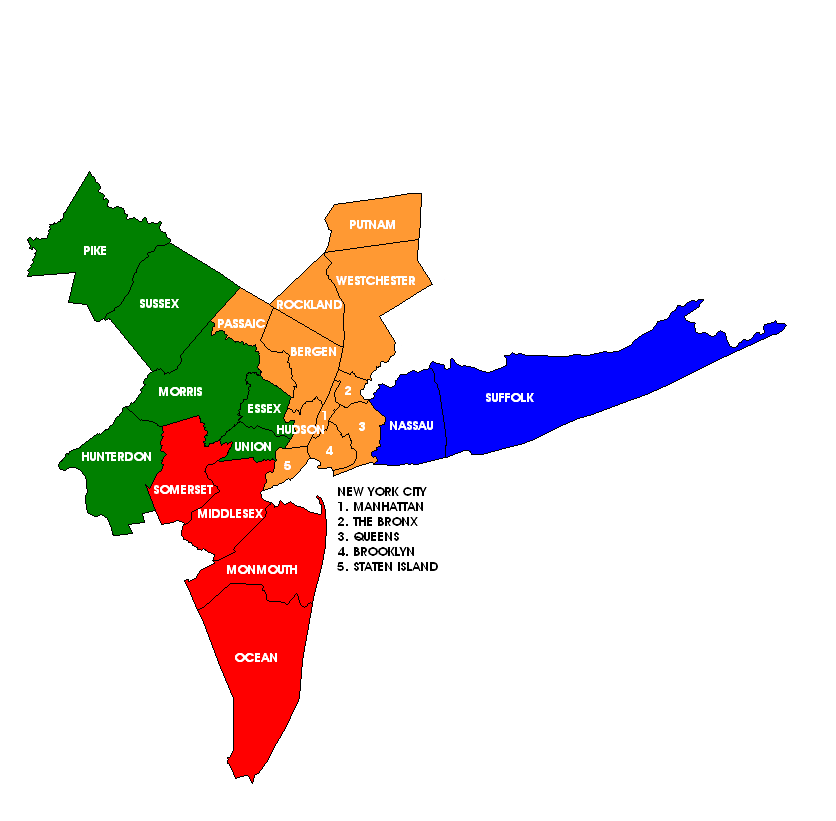|
Northeast Pennsylvania
Northeastern Pennsylvania (NEPA) is a geographic region of the U.S. state of Pennsylvania that includes the Pocono Mountains, the Endless Mountains, and the industrial cities of Scranton, Wilkes-Barre, Pittston, Hazleton, Nanticoke, and Carbondale. A portion of this region constitutes a part of the New York City metropolitan area. Unlike most parts of the Rust Belt, some of these communities are experiencing a modest population increase, and others, including Monroe and Pike counties, rank among the fastest growing areas of Pennsylvania. Northeastern Pennsylvania borders the Lehigh Valley to its south, Warren County, New Jersey to its east, and Broome County, New York to its north. Area Northeastern Pennsylvania comprises Bradford County, Carbon County, Columbia County, Lackawanna County, Luzerne County, Monroe County, Montour County, Northumberland County, Pike County, Schuylkill County, Sullivan County, Susquehanna County, Wayne County, and Wyoming County. ... [...More Info...] [...Related Items...] OR: [Wikipedia] [Google] [Baidu] |
Scranton, Pennsylvania
Scranton is a city in the Commonwealth (U.S. state), Commonwealth of Pennsylvania, United States, and the county seat of Lackawanna County, Pennsylvania, Lackawanna County. With a population of 76,328 as of the 2020 United States census, 2020 U.S. census, Scranton is the largest city in Northeastern Pennsylvania, the Wyoming Valley, and the Scranton–Wilkes-Barre–Hazleton Metropolitan Statistical Area, which has a population of 562,037 as of 2020. It is List of cities and boroughs in Pennsylvania by population, the sixth largest city in Pennsylvania. The contiguous network of five cities and more than 40 boroughs all built in a straight line in Northeastern Pennsylvania's urban area act culturally and logistically as one continuous city, so while the city of Scranton itself is a smaller town, the larger unofficial city of Scranton/Wilkes-Barre contains nearly half a million residents in roughly 200 square miles. Scranton/Wilkes-Barre is the cultural and economic center of a re ... [...More Info...] [...Related Items...] OR: [Wikipedia] [Google] [Baidu] |
Carbondale, Pennsylvania
Carbondale is a city in Lackawanna County, Pennsylvania, United States. Carbondale is located approximately 15 miles due northeast of the city of Scranton in Northeastern Pennsylvania. The population was 8,828 at the 2020 census. The land area that became Carbondale was developed by William and Maurice Wurts, the founders of the Delaware and Hudson Canal Company, during the rise of the anthracite coal mining industry in the early 19th century. It was also a major terminal of the Delaware and Hudson Railroad. Carbondale was the site of the first deep vein anthracite coal mine in the United States, and was the site of the Carbondale mine fire which burned from 1946 to the early 1970s. Like many other cities and towns in the region, Carbondale has struggled with the demise of the once-prominent coal mining industry that had once made the region a haven for immigrants seeking work so many decades ago. Immigrants from Wales, England, Scotland, Ireland, Italy and from throughout conti ... [...More Info...] [...Related Items...] OR: [Wikipedia] [Google] [Baidu] |
Warren County, New Jersey
Warren County is a county located in the U.S. state of New Jersey. As of the 2020 U.S. census, the county's population was 109,632, representing an increase of 940 (0.9%) from the 108,692 residents counted at the 2010 census. The county borders the Delaware River and Easton, Pennsylvania in the Lehigh Valley to its west, the New York City metropolitan area to its east, and The Poconos to its northwest. Warren County is the only county in New Jersey which is not part of the combined statistical areas of New York City or Philadelphia. The most populous place is Phillipsburg, with 14,950 residents at the time of the 2010 census while Hardwick Township had both the largest area and the fewest people with 1,696 residents. Its county seat is Belvidere.New Jersey County Map , |
Lehigh Valley
The Lehigh Valley (), known colloquially as The Valley, is a geographic region formed by the Lehigh River in Lehigh County and Northampton County in eastern Pennsylvania. It is a component valley of the Great Appalachian Valley bound to the north by Blue Mountain, to the south by South Mountain, to the west by Lebanon Valley, and to the east by the Delaware River on Pennsylvania's eastern border with Warren County, New Jersey. The Valley is about long and wide. The Lehigh Valley's largest city is Allentown, the third largest city in Pennsylvania and the county seat of Lehigh County, with a population of 125,845 residents as of the 2020 census. The Allentown-Bethlehem- Easton metropolitan area, which includes the Lehigh Valley, is currently Pennsylvania's third most populous metropolitan area after those of Philadelphia and Pittsburgh, and the nation's 68th largest metropolitan area with a population of 861,889 residents as of 2020. Lehigh County is among Pennsylvania's ... [...More Info...] [...Related Items...] OR: [Wikipedia] [Google] [Baidu] |
Pike County, Pennsylvania
Pike County is a county in the Commonwealth of Pennsylvania. It is part of Northeastern Pennsylvania. As of the 2020 census, the population was 58,535. Its county seat is Milford. Pike County is included in the New York-Newark-Jersey City, NY- NJ-PA Metropolitan Statistical Area. History Pike County was named for General Zebulon Pike. It was organized on March 26, 1814 from part of Wayne County, Pennsylvania. Some English settlement in the area had started during the colonial years. The longtime original inhabitants were the Lenape Native Americans, known by the English colonists as the Delaware Indians because their territory was along the Delaware River (as named by the colonists), as well as the coastal mid-Atlantic area. In 1694, Governor Benjamin Fletcher of the colony of New York sent Captain Arent Schuyler to investigate claims that the French were recruiting Indian allies for use against the English. In 1696, governor Fletcher authorized purchases of Indian l ... [...More Info...] [...Related Items...] OR: [Wikipedia] [Google] [Baidu] |
Monroe County, Pennsylvania
Monroe County is a County (United States), county in the Commonwealth (U.S. state), Commonwealth of Pennsylvania. It is located in Northeastern Pennsylvania. As of the 2020 United States census, 2020 census, the population was 168,327. Its county seat is Stroudsburg, Pennsylvania, Stroudsburg. The county was formed from sections of Northampton County, Pennsylvania, Northampton and Pike County, Pennsylvania, Pike counties on April 1, 1836. Named in honor of James Monroe, the fifth president of the United States, the county is located in Northeastern Pennsylvania, along its border with New Jersey. Monroe County is coterminous with the East Stroudsburg, Pennsylvania, East Stroudsburg, PA Metropolitan statistical area, Metropolitan Statistical Area. It also borders the Wyoming Valley, the Lehigh Valley, and has connections to the Delaware Valley and the New York metropolitan area, Tri-State Area as part of New York City, New York City's Designated Media Market, but also receiving me ... [...More Info...] [...Related Items...] OR: [Wikipedia] [Google] [Baidu] |
Population Increase
Population growth is the increase in the number of people in a population or dispersed group. Actual global human population growth amounts to around 83 million annually, or 1.1% per year. The global population has grown from 1 billion in 1800 to 7.9 billion in 2020. The UN projected population to keep growing, and estimates have put the total population at 8.6 billion by mid-2030, 9.8 billion by mid-2050 and 11.2 billion by 2100. However, some academics outside the UN have increasingly developed human population models that account for additional downward pressures on population growth; in such a scenario population would peak before 2100. World human population has been growing since the end of the Black Death, around the year 1350. A mix of technological advancement that improved agricultural productivity and sanitation and medical advancement that reduced mortality increased population growth. In some geographies, this has slowed through the process called the demographic tra ... [...More Info...] [...Related Items...] OR: [Wikipedia] [Google] [Baidu] |
Rust Belt
The Rust Belt is a region of the United States that experienced industrial decline starting in the 1950s. The U.S. manufacturing sector as a percentage of the U.S. GDP peaked in 1953 and has been in decline since, impacting certain regions and cities primarily in the Northeast and Midwest regions of the U.S., including Allentown, Buffalo, Cincinnati, Cleveland, Columbus, Jersey City, Newark, Pittsburgh, Rochester, Toledo, Trenton, Youngstown, and other areas of New Jersey, Ohio, Pennsylvania, and Upstate New York. These regions experienced and, in some cases, are continuing to experience the elimination or outsourcing of manufacturing jobs beginning in the late 20th century. The term "Rust" refers to the impact of deindustrialization, economic decline, population loss, and urban decay on these regions attributable to the shrinking of the once-powerful industrial sector especially including steelmaking, automobile manufacturing, and coal mining. The term gained popularity ... [...More Info...] [...Related Items...] OR: [Wikipedia] [Google] [Baidu] |
New York City Metropolitan Area
The New York metropolitan area, also commonly referred to as the Tri-State area, is the largest metropolitan area in the world by urban area, urban landmass, at , and one of the list of most populous metropolitan areas, most populous urban agglomerations in the world. The vast metropolitan area includes New York City, Long Island, the Mid and Lower Hudson Valley in the State of New York; the six largest cities in New Jersey: Newark, New Jersey, Newark, Jersey City, New Jersey, Jersey City, Paterson, New Jersey, Paterson, Elizabeth, New Jersey, Elizabeth, Lakewood, New Jersey, Lakewood, and Edison, New Jersey, Edison, and their vicinities; and six of the seven largest cities in Connecticut: Bridgeport, Connecticut, Bridgeport, Stamford, Connecticut, Stamford, New Haven, Connecticut, New Haven, Waterbury, Connecticut, Waterbury, Norwalk, Connecticut, Norwalk, and Danbury, Connecticut, Danbury, and the vicinities of these cities. The New York metropolitan area comprises the geograp ... [...More Info...] [...Related Items...] OR: [Wikipedia] [Google] [Baidu] |
Industrialization
Industrialisation ( alternatively spelled industrialization) is the period of social and economic change that transforms a human group from an agrarian society into an industrial society. This involves an extensive re-organisation of an economy for the purpose of manufacturing. Historically industrialization is associated with increase of polluting industries heavily dependent on fossil fuels. With the increasing focus on sustainable development and green industrial policy practices, industrialization increasingly includes technological leapfrogging, with direct investment in more advanced, cleaner technologies. The reorganization of the economy has many unintended consequences both economically and socially. As industrial workers' incomes rise, markets for consumer goods and services of all kinds tend to expand and provide a further stimulus to industrial investment and economic growth. Moreover, family structures tend to shift as extended families tend to no longer live ... [...More Info...] [...Related Items...] OR: [Wikipedia] [Google] [Baidu] |
Endless Mountains
The Endless Mountains are a geographical, geological, and cultural region in Northeastern Pennsylvania. The Endless Mountains region includes Bradford, Sullivan, Susquehanna, and Wyoming counties. The highest peak in the region is the North Knob of Elk Mountain at 2693 feet (821 meters). Geography Part of the Appalachian Mountains chain, the region does not consist of true mountains, geologically speaking, but instead a dissected plateau that is part of the Allegheny Plateau. The Catskill Mountains are the highest expression of the plateau, located to the east of the Endless Mountains, and separated from them by the Delaware River. The current geography was slightly modified during the last ice age by the Wisconsin Glacier about 15,000 years ago. Glacial striations can be found on the rocks of some of the high ridges, but the area was at the margin of the ice sheet, and the impact was much less than in New York just to the north. The "mountains" are made up of sedimentar ... [...More Info...] [...Related Items...] OR: [Wikipedia] [Google] [Baidu] |
Pocono Mountains
The Pocono Mountains, commonly referred to as the Poconos , are a geographical, geological, and cultural region in Northeastern Pennsylvania. They overlook the Delaware River and Delaware Water Gap to the east, Lake Wallenpaupack to the north, Wyoming Valley and the Coal Region to the west, and the Lehigh Valley to the south. The name Pocono is derived from the Munsee word Pokawachne, which means "Creek Between Two Hills". Much of the Poconos region lies within the Greater New York–Newark, NY–NJ–CT–PA Combined Statistical Area. The wooded hills and valleys have long been a popular recreation area, accessible within a two-hour drive to millions of metropolitan area residents, with many Pocono communities having resort hotels with fishing, hunting, skiing, and other sports facilities. The Poconos are an upland of the larger Allegheny Plateau, forming a escarpment. Population The Pocono Mountains are a popular recreational destination for local and regional visitors. W ... [...More Info...] [...Related Items...] OR: [Wikipedia] [Google] [Baidu] |




